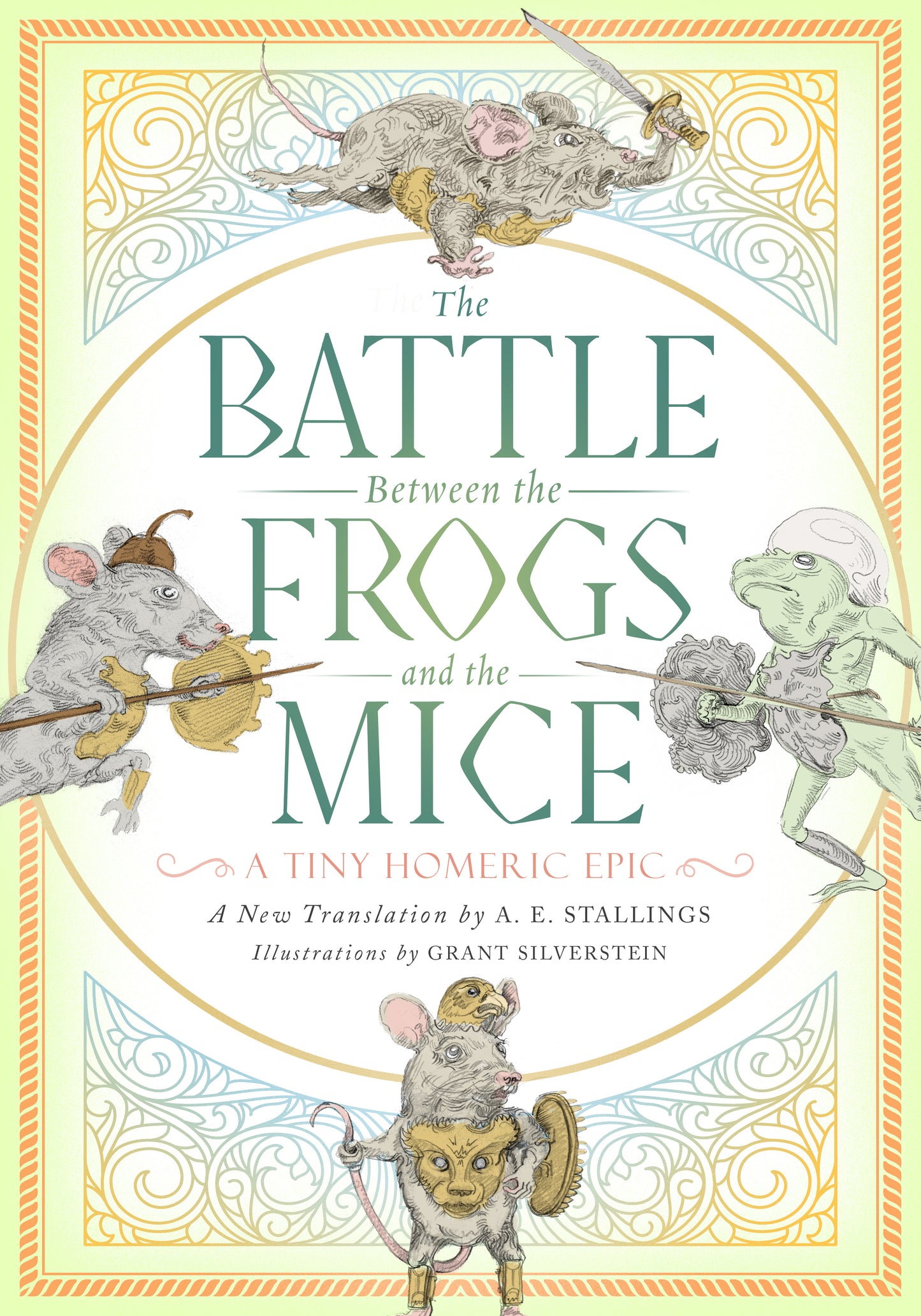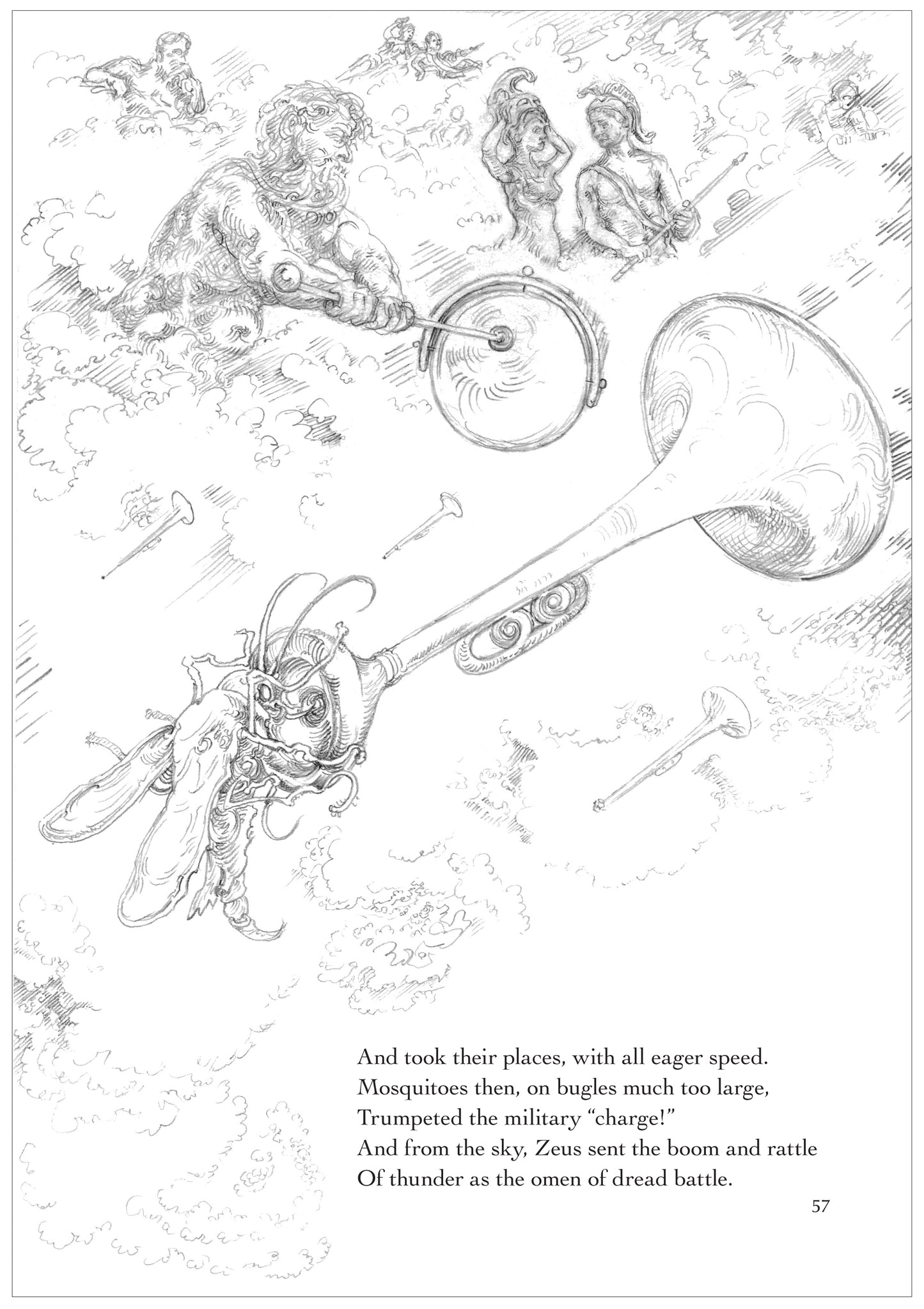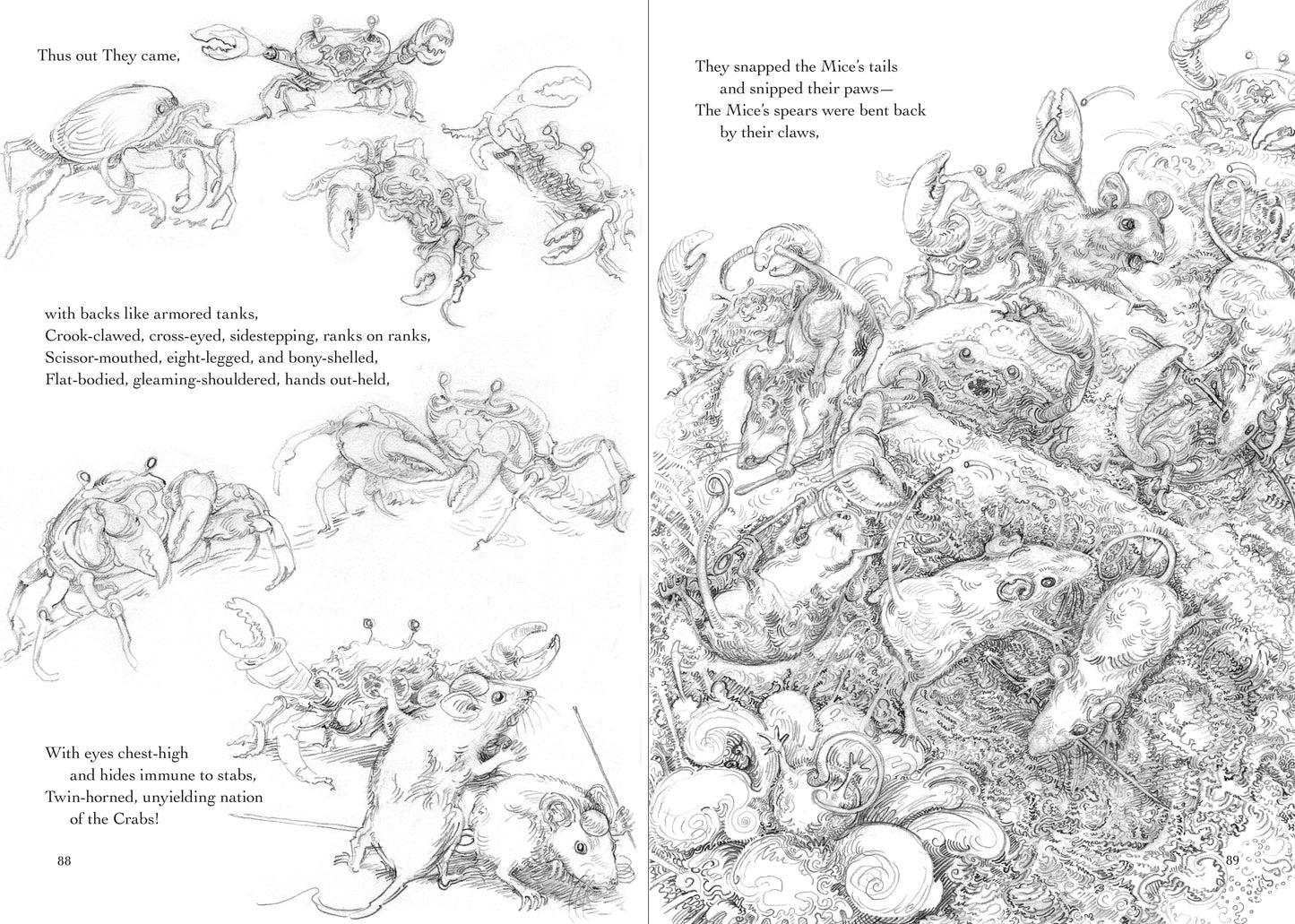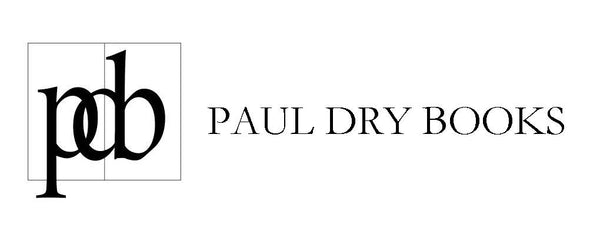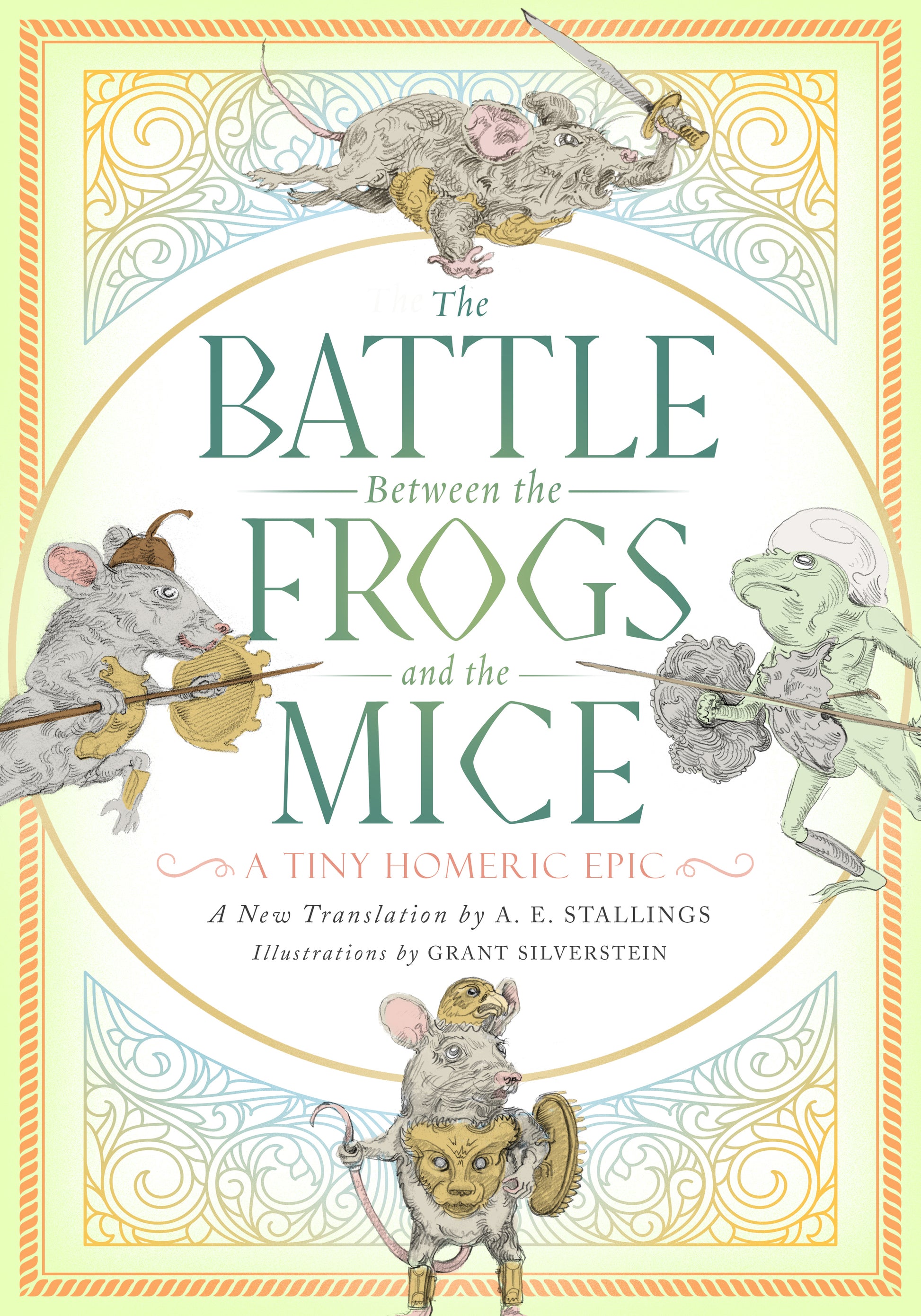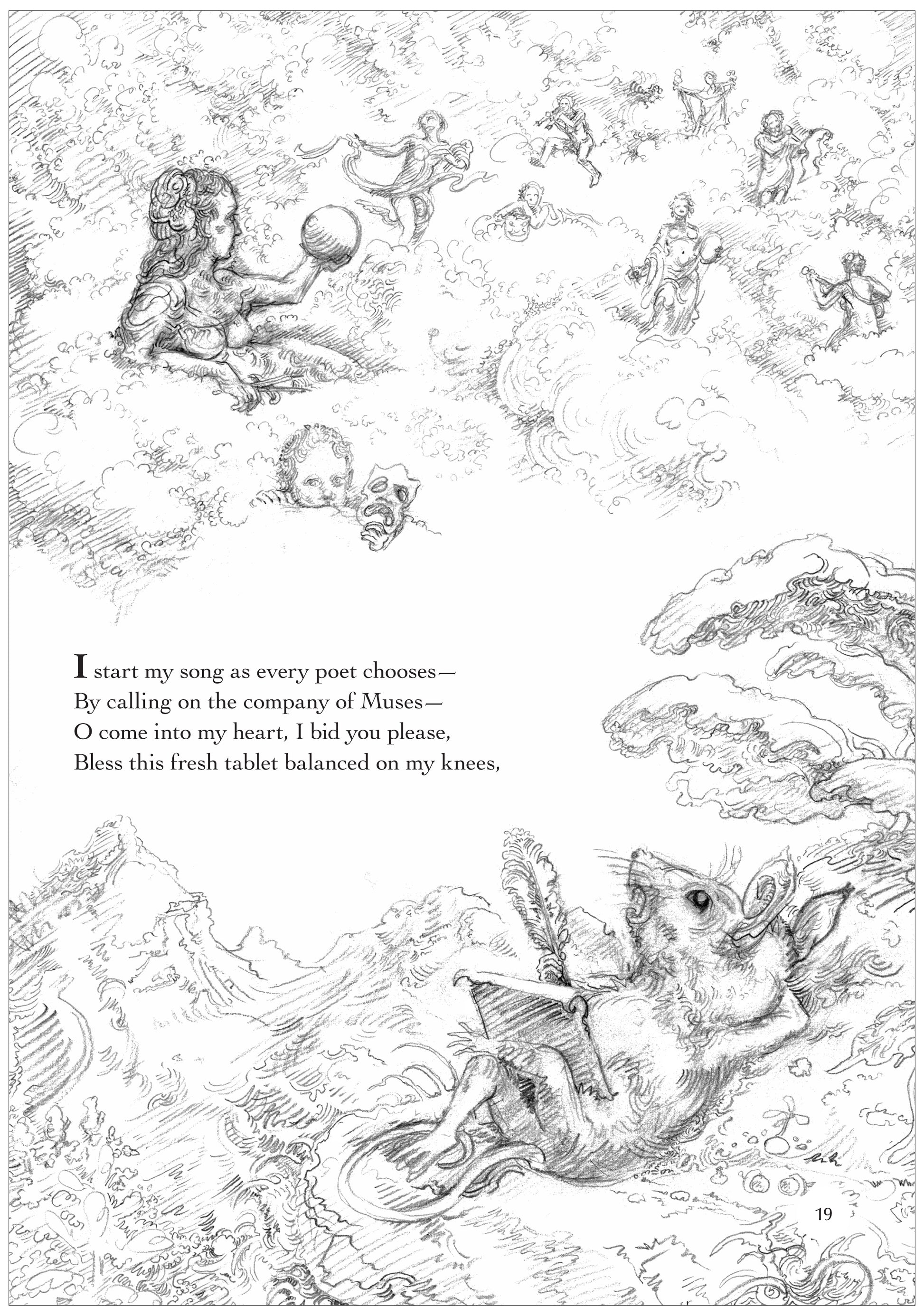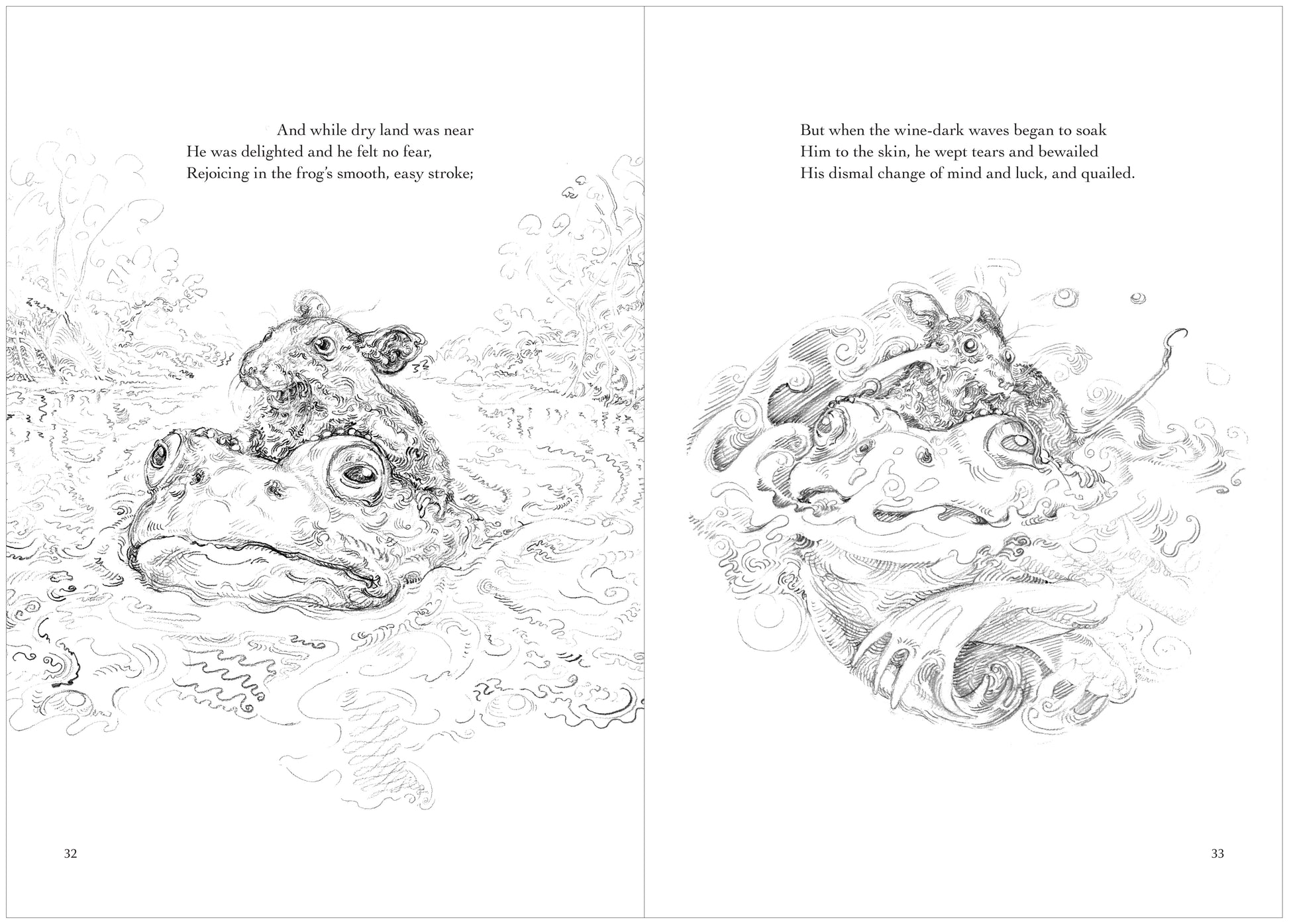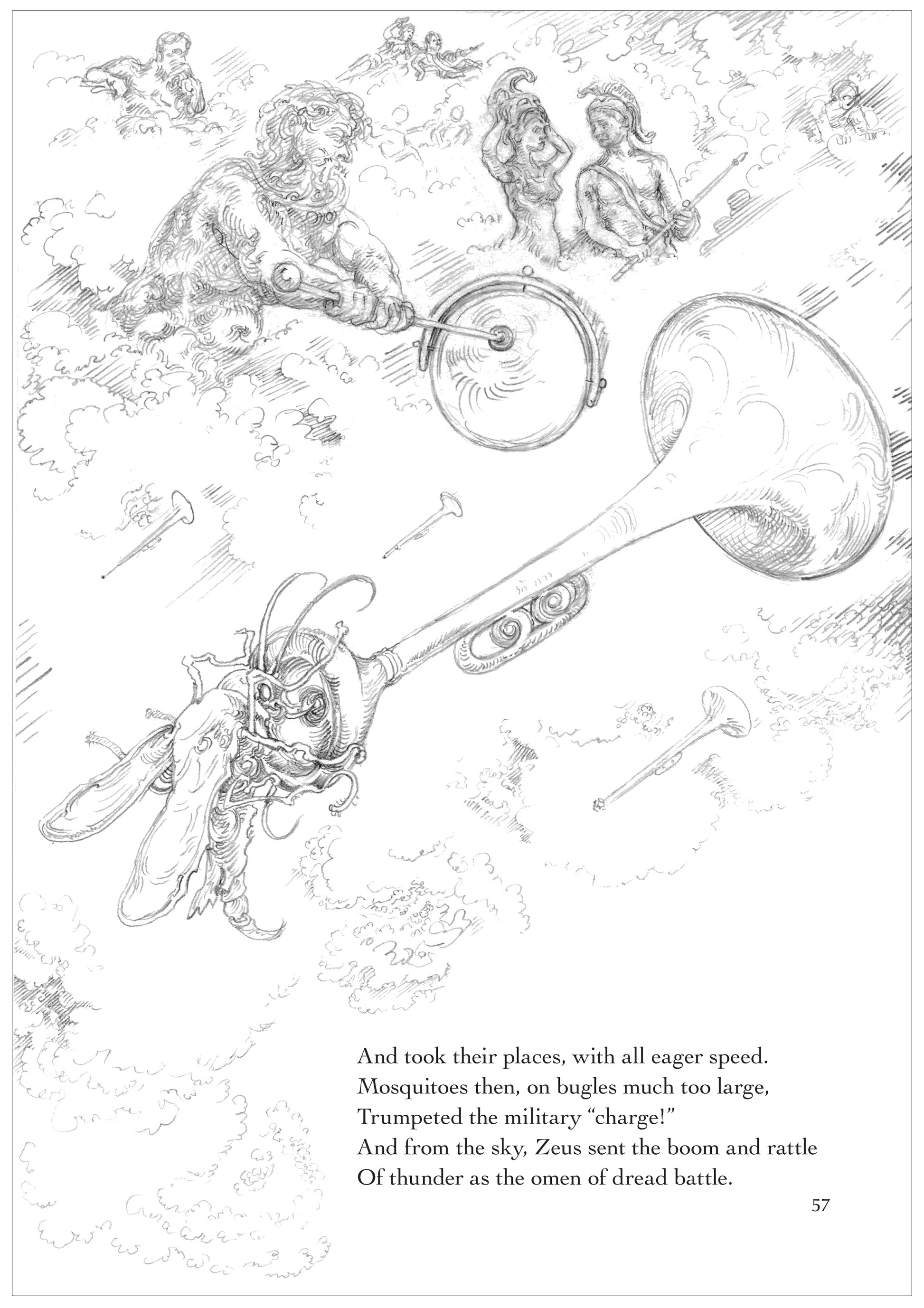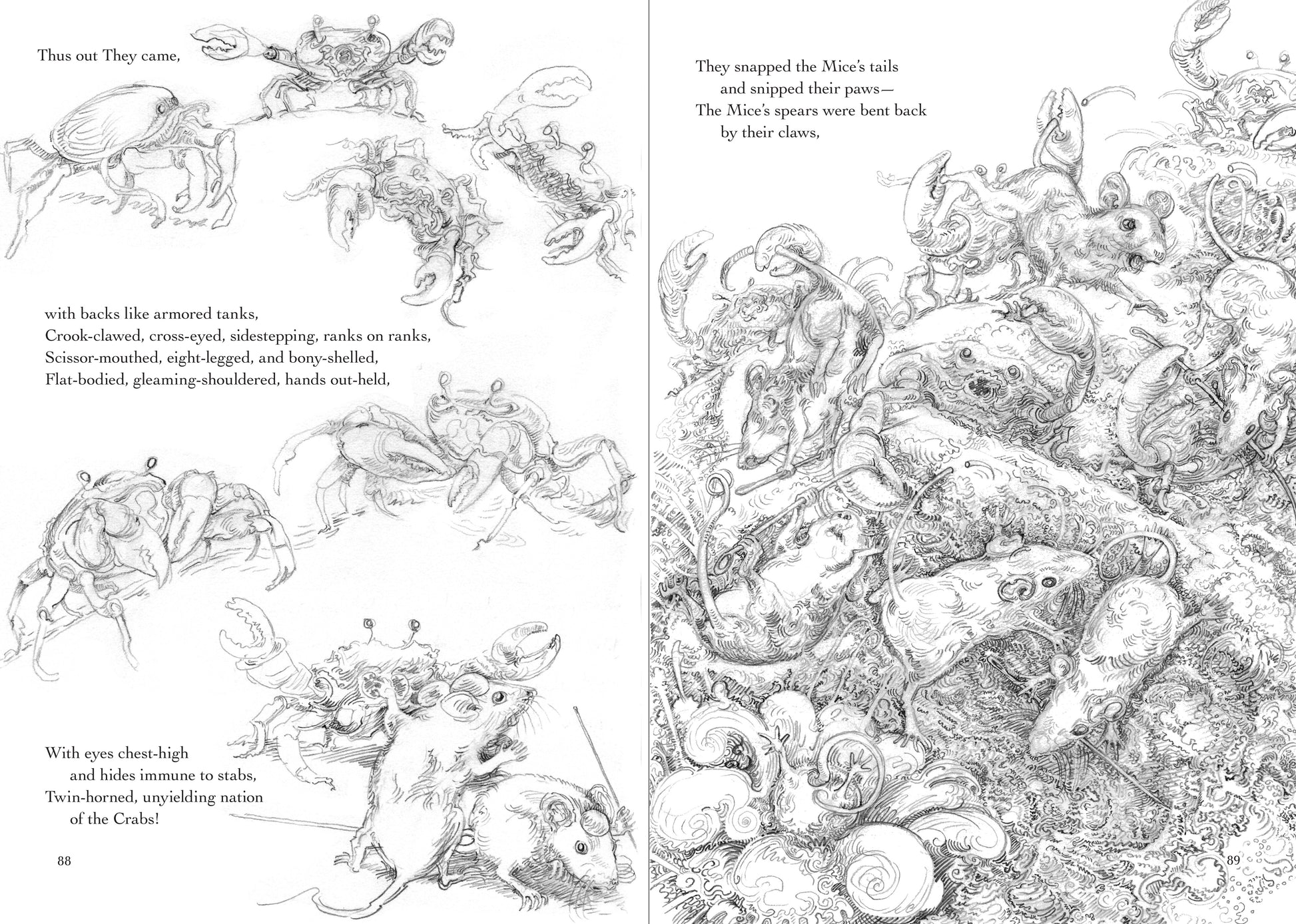The Battle Between the Frogs and the Mice
The Battle Between the Frogs and the Mice
A. E. Stallings
Couldn't load pickup availability
Illustrations by Grant Silverstein / 110-page paperback / 7" x 10" / ISBN 9781589881426 / Publication Date: 10/15/2019
"A virtuosic, witty, charming translation of the greatest epic ever written about mice, with wonderful illustrations by Grant Silverstein. Stallings’ elegant rhyming couplets are the perfect choice to honor the mousy Muse."—Emily Wilson, Professor of Classics, University of Pennsylvania
From the award-winning poet and translator A. E. Stallings comes a lively new edition of the ancient Greek fable The Battle between the Frogs and the Mice. Originally attributed to Homer, but now thought to have been composed centuries later by an unknown author, The Battle is the tale of a mouse named Crumbsnatcher who is killed by the careless frog King Pufferthroat, sparking a war between the two species. This dark but delightful parable about the foolishness of war is illustrated throughout in striking drawings by Grant Silverstein.
The clever introduction is written from the point of view of a mouse who argues that perhaps the unknown author of the fable is not a human after all: “Who better than a mouse, then, to compose our diminutive, though not ridiculous, epic, a mouse born and bred in a library, living off lamp oil, ink, and the occasional nibble of a papyrus, constantly perched on the shoulder of some scholar or scholiast of Homer, perhaps occasionally whispering in his ear? Mouse, we may remember, is only one letter away from Muse.”
Also available as an ebook:
- Amazon
- Apple iTunes Bookstore
- Google Play
- Kobo (See IndieBound's list of independent booksellers selling e-books.)
"[Stallings] couplets . . . have a lively, nimble music that should captivate modern ears . . . Providing an earthy, oboe-like obligato to Ms. Stallings's airs are the illustrations of Grant Silverstein, cross-hatched sketches that multiply like mice on the page . . . The Battle, in which beans are happily worn rather than eaten, still has the power to delight."—Wall Street Journal
"Stallings' translation of this ancient epic is a delight: charming, witty, and vividly alive, with buoyant rhymes and eye-catching illustrations. I suspect this will become a beloved addition in many home libraries."—Madeline Miller, bestselling author of Circe
"It takes real poetic skill to parody a master so subtly that the result becomes mistaken for the poetry of the master himself at play. And now, in A. E. Stallings translation of the Batrachomyomachia, we have what seems a comparably ambitious and convincing re-creation of that ancient recreation. Stallings is both a trained classicist and a well-regarded poet in English. And she is especially well regarded for her seemingly natural command of meter and rhyme — a command that’s uncommon in our era. Her rhymed couplets are the product of an innately sensitive ear . . . The main section presents the poem interwoven on every page with Silverstein’s pencil drawings — of frogs and mice and weasels and hawks and snakes and gods with human faces. At first, I thought of the illustration as maybe somewhat analogous to medieval illumination. But as I read on, I realized it wasn’t that at all. There’s too much drama in the drawings’ visual punctuation. I instead came to appreciate their larger role as visual harmonics — a substitute for a lyre, of sorts, accompanying the combined voices of bard and translator. They are an integral part of the success of this small volume, which I am very glad to have read."—Los Angeles Review of Books
"With two introductions – one under Stallings’s name and another by ‘A. Nony Mouse’ – plus a glossary of dramatis personae, an appendix and the notes of an erudite classicist, this is a playful yet serious work of scholarship in miniature. It shouldn’t be so rare for a poet to be serious and to sparkle at the same time, but Stallings is one of the few."—London Review of Books
"The battle begins in Aesopian style with a frog luring a mouse to its death. (Was it deliberate? You decide.) The subsequent outcry leads to all-out war, albeit a tiny one. Those familiar with the Iliad will thrill at its miniaturization. The names of the heroes (King Pufferthroat begins the plot, and one whiskered Morselsnatcher is its fiercest fighter), the armor and armaments (chickpea shells for helmets and bean pods for shin protection, spears made of rushes), and the inevitable interference of the gods are all present and adorably parallel with expectations. It even ends with a crustaceus ex machina you will not expect . . . Of course, because this is Stallings, the translation is in tight rhymed verse that balances both the grandeur of epic and the particular qualities of the warriors . . . The illustrations by Grant Silverstein maintain this balance, taking the combatants seriously (or as seriously as one can take the skinny legs of a standing frog wielding a beet leaf for a shield) and conveying the intensity of the battle."—Light Poetry Magazine
"What fun it must have been for A. E. Stallings to discover The Battle Between the Frogs and the Mice when it first appeared at the Gennadius Library in Athens. The story is a classic parable 'in good Homeric Greek' that underscores the futility of war but is replete with foolish names and activities that an author like Stallings can play with in rhymed couplets, giving free range to her imagination and wit. She might have taken a scholarly approach; instead the book is a rollicking, fast-paced romp, easily read in a sitting."—The Hudson Review
"A delightful surprise . . . Adding to the humour already presented in the original (like the names of the creatures, all adapted into English), clever puns and plays-on-words punctuate the translation and the introduction . . . There is something Carrollian in Stallings’ taste for puns and in the lightness of her translation as a whole . . . Grant Silverstein’s gracious etchings of animals and gods evoke well-known drawings by Renaissance artists like Michelangelo and Leonardo da Vinci, and provide a lively visual counterpart to the narrative."—Bryn Mawr Classical Review
"A unique and delightfully entertaining read."—Midwest Book Review
"The characters of this dazzling epic spring to life (and death!) in Grant Silverstein's exquisitely detailed drawings."—Ann Temkin, Chief Curator, Department of Painting and Sculpture, The Museum of Modern Art
"A delightful translation of an overlooked gem of ancient Greek satire."—A.M. Juster
A. E. Stallings is an American poet who has lived in Athens, Greece since 1999. She studied Classics at the University of Georgia, and later at Oxford University. She has published four collections of poetry, Archaic Smile (which won the 1999 Richard Wilbur Award), Hapax (recipient of the Poets’ Prize), Olives (a finalist for the National Book Critics Circle Award), and Like (a finalist for the Pulitzer Prize in Poetry). Her translation of Lucretius (into rhyming fourteeners), The Nature of Things, was called by Peter Stothard in the TLS “One of the most extraordinary classical translations of recent times.”
Stallings has received a translation grant from the National Endowment for the Arts (US), and fellowships from the Guggenheim Foundation and United States Artists, as well as a "genius grant" from the MacArthur Foundation. She is also a member of the American Academy of Arts and Sciences. Her work is widely anthologized, and has been included in the Best American Poetry in 1994, 2000, and 2015, and in the Best of the Best American Poetry (ed. Robert Pinsky). Her poems appear in The Atlantic Monthly, The Beloit Poetry Review, The Dark Horse, The New Yorker, Poetry, Poetry Magazine, Poetry Review, and the TLS, among others. She also contributes essays and reviews to the American Scholar, Parnassus, Poetry Magazine, Poetry Review, the TLS, and the Yale Review.
Stallings is married to the journalist, John Psaropoulos, and has two children, Jason and Atalanta.
Read an interview with Literary Hub.
Grant Silverstein is an American artist who specializes in etchings of a narrative character and in studies of figures, landscapes, and animals. With his wife and two cats, he spends winters holed up in his studio in rural Pennsylvania, where he uses a catch and release system for visiting mice and the occasional frog. Come spring, he ventures forth to display his work at outdoor festivals; he feels fortunate to have made his living this way for forty years. He has illustrated two previous Paul Dry Books titles, Davey McGravy by David Mason and The Verb 'To Bird' by Peter Cashwell.
